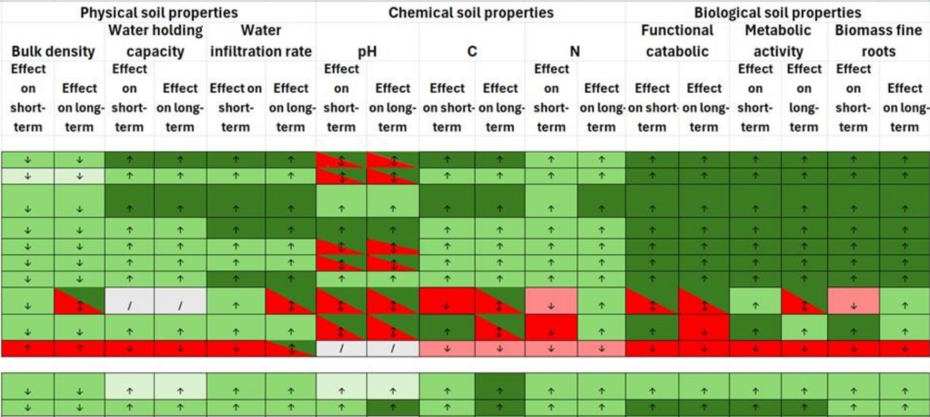Measuring, Reporting, and Verification of Forest Restoration
2.2 Soil Health

Despite its crucial role, soil health is often overlooked in restoration efforts. But what defines healthy soils?
While there is no single ‘optimal’ state to define soil health, several indicators remain consistently relevant for its assessment (Bünemann et al., 2018; Lehmann et al., 2020). These indicators capture both the soil’s capability - its potential to support key functions such as plant growth and ecosystem services, which reflects a set of very slowly changing characteristics like soil texture - and its condition, referring to its current but manageable physical, chemical, and biological properties (McBratney et al., 2014). In general, healthy soils tend to have a well-structured profile with little compaction and sufficient mesopore and macropore spaces, ideal for the movement of water, roots, air, nutrients and organisms (Frene et al., 2024; Stewart et al., 2018; Wang & Zhang, 2024). Maintaining and restoring soil functions requires a holistic approach that integrates multiple dimensions of soil health.
Effective soil restoration focuses on three key soil components: physical, chemical and biological properties (Stewart et al., 2018). Within SUPERB, we assessed these three components using scalable indicators, which are indicators that can be used across different contexts and are cost-effective, easy to measure and scientifically relevant. The scalable indicators used in SUPERB, are bulk density (a physical property) carbon, nitrogen and pH (chemical properties) and fine root biomass, microbial activity and diversity (biological properties). Their sampling frequency, time and methodologies as well as analysing costs and methodologies can be found in the report “D6.4 Soil Restoration and Monitoring Guidelines” published by SUPERB. In addition to outlining these indicators, the report also translates the concept of soil health indicators into practical tools and recommendations tailored for forest restoration practitioners. We developed forest restoration and monitoring guidelines with a focus on soil health, aiming to provide both actionable insights and practical recommendations. Soil sampling conducted across 11 European forest sites generated valuable data that informed the development of these guidelines, which are structured around three key questions: What to restore? How to restore? And how to monitor? In the What to restore section, we explore the three main components of soil health - chemical, physical, and biological properties - in greater detail. The How to restore section includes a table summarising various restoration techniques and their effects on different soil properties. Finally, in How to monitor, we emphasise the importance of both baseline (pre-restoration) assessments and ongoing monitoring to track restoration outcomes effectively.
Related resources
Forest and Soil Restoration Table
An Excel table that outlines various forest restoration measures and their effects on key soil parameters. This table offers a practical overview for assessing the benefits and limitations of different approaches to forest and soil restoration. Colours indicate a positive or negative effect, while the arrows indicate if there is an increase or decrease of the soil properties. When interpreting this table, it is important to consider that factors like previous land use and implementation quality can strongly influence soil recovery outcomes.


